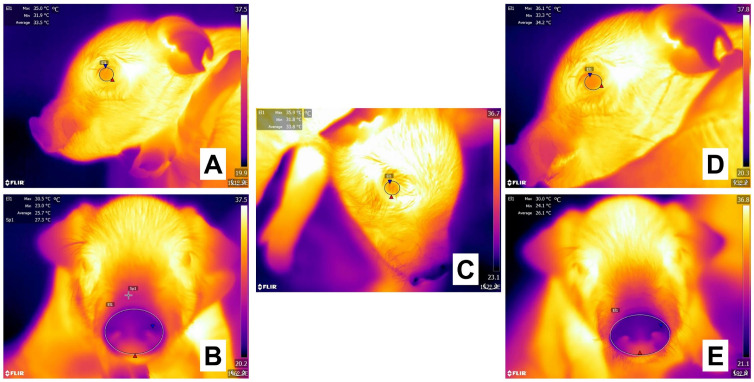Figure 7.
Evaluation of the thermal response of 1-day-old piglets during tail docking with side-cutter pliers. (A,B) Before tail docking, the ocular surface (A, El1) of the piglet registered a maximum temperature (red triangle) of 35.0 °C, while the nasal window (B, El1) had a maximum temperature (red triangle) of 30.5 °C. (C). During the procedure, the ocular surface window increased its maximum temperature by 0.9 °C. (C,D) When comparing basal values with the surface temperatures taken immediately after tail docking, the maximum temperature of the piglet at the ocular window (D, El1) increased by 1.1 °C. At the same time, the nasal region (E, El1) decreased by 0.5 °C. This ambivalent reaction could be a result of the HPA axis increasing blood flow to important organs such as the eye and limiting it to a peripheral region such as the piglet’s nose. Sp1: default focal point of the software. The thermal images were taken by the authors of the present review. Radiometric images were obtained using a T1020 FLIR thermal camera. Image resolution 1024 × 768; up to 3.1 MP with UltraMax. FLIR Systems, Inc. Wilsonville, OR, USA.

